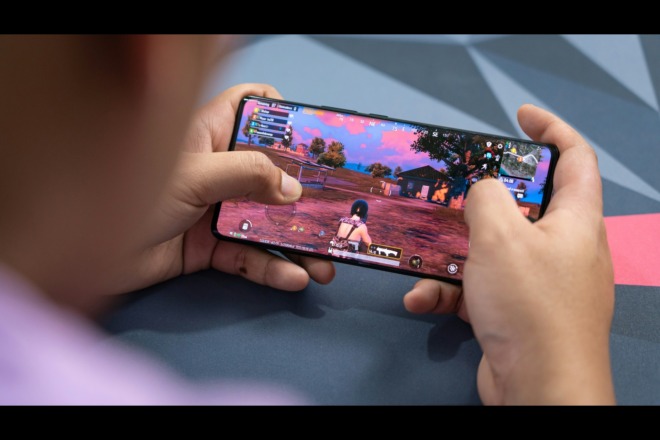Finding the perfect font for your design isn’t always easy. That’s why we created the font series to introduce you to some of the most usable and interesting fonts available. If you’re looking for another font that is quite versatile, the Brody font is a good choice.
Brody falls into the category of a handwritten font. Its bold, almost italic-looking letters are reminiscent of a personal letter. While it is readily available, this font isn’t seen frequently in designs, so using it will give your project a unique element that competitors might not have. Let’s take an in-depth look at this font, a versatile font that works for websites as well as signs:
Origin
The publisher of Brody was originally the American Type Founders (ATF), and the designer was Harold Broderson. At the time, Broderson worked for ATF. He designed the font in 1953, just past the first half of the twentieth century when the world saw big changes in typefaces.
Broderson is an American typeface designer, but Brody font is sometimes confused with fonts created by another type designer named Neville Brody from the United Kingdom. However, Neville Brody does not have a font by this name. Neville Brody has quite a history as a typographer, creating fonts such as BF Bonn, BF Buffalo, and Arcadia. It isn’t any surprise that people sometimes confuse his work and that of Harold Broderson.
Broderson was designing well before Brody was even born, and the font “Brody” is credited to him. The name similarity is just a coincidence and a play on his longer name, or perhaps even a nickname of his. Whatever his reason for naming the font “Brody,” he likely had no idea that someone named Brody would come along later and design fonts as well. Harold Broderson was born on December 13, 1913.
Today, Brody is in the Linotype Library. Linotype has it tagged with a number of different classifications. This includes retro, decorative, handmade, old-fashioned, and brush classes. Some font repositories classify Brody as handwritten, while others classify it as script or graffiti. It certainly could be used for any of these looks.
Mechanics of Brody
Many of the typefaces designed in the 1950s are commonly used today. Other fonts created in the 50s include Helvetica, Palatino, and Futura. Brody is part of a family of fonts, including SG Brody SB, SG Brody SH, EF Brody, and Brody EF, and the differences between each typeface are minor. In all cases, the font has thick, bold strokes that are reminiscent of hand-painted graffiti art.
The brush-looking script is much like the show card lettering style, a popular look in the early 1900s. If one took a flat lettering paintbrush and sketched out the letters, they would appear similar to Brody font. It’s actually very similar to how calligraphy looks.
The footprint is fairly wide and short because of the heavy strokes of the letters, and the pitch is not monospaced. The look is almost cursive with some serifs — lowercase letters connect to each other, just as with cursive writing. Brody supports as many as 69 different languages and supports OpenType features.
What Does the Font Imply?
Brody has a fun, retro feel to it. If you want to create something that feels like it is out of the 1950s, this font would be a good choice. However, it could be used for any time period as well. It is a rather informal font, so is best used for casual uses or mixed with a more professional-looking font.
Since most people agree it belongs in the script family, it’s also good for adding a sophisticated air to a design. Even though its roots are in old-school show card lettering, its cursive look makes it feel more elegant. You could make your work fun or classy depending on which fonts and graphics you pair Brody with.
Where It’s Commonly Found/Used
Brody mimics the look of show cards, or posters used to advertise in store windows. It is commonly found on sales signage for this reason. Not only does it grab attention because of its bold strokes, but it fits perfectly on a poster-sized display.
You’ll find this font used on posters about summer picnics, local festivals, and other events that bring a bit of nostalgia to the mix. It gives off a classic vintage appeal, so many people use it to bring a certain aesthetic to their design. You’re less likely to see it on movie posters or as part of a logo.
Even though it works great for headings, it might be a bit too wide to work well as a logo. This is especially if it is used in places where the size must be reduced. It doesn’t scale well — especially when you reduce it — so people often don’t use it because they can’t easily brand their products with it.
However, these kinds of logos still exist even if they’re uncommon. You’ve probably even seen them before because some are very famous. For example, the Coca-Cola, Kleenex, Kellogg’s, and Barbie logos only use script fonts for their branding. They don’t specifically use Brody, but they show it’s possible to do so.
What Should It Be Used As?
The regular Brody font has a max height of 1245 and a max width of 921, so it is best suited for medium-sized projects. If you are having an apple pie baking contest, for example, the font would work perfectly for flyers about the event. It brings a touch of yesteryear without seeming dated and is reminiscent of summers past.
It doesn’t translate well in smaller sizes because the letters are so bold, so it would almost be unreadable. Imagine trying to read an event poster when everything is written in calligraphy-style cursive — it would be challenging, to say the least.
However, it looks great on signs and as headings. Complex fonts always look better when they’re larger than the surrounding text. You could, therefore, use it on a website as an H1 heading. It would then add to an overall nostalgic feel and tone.
Brody works well for on-the-fly sales signs to let people know about specials in your store as well. Since it was developed with show cards in mind, it is ideal for quick designs of this nature and multiple signs about various specials. Using Brody in a series of signs provides a more cohesive look throughout a store or another location and ties everything together.
Where Should It Be Used?
Brody looks best in print, but you can use it in digital design if you want to add a touch of nostalgia or sophistication. Since it looks like calligraphy, it adds a lot of character to whatever it’s a part of. It isn’t as formal as other script fonts, so it’s more versatile.
In digital design, it’s best to use Brody sparingly. People may be unable to read your work on their mobile device if you use too much of it. As long as you are careful, you can use it in email marketing, logos, social media graphics, and banner advertisements.
Print is where Brody really shines — it works on invitations, announcements, brochures, stationary, labels, banners, and flyers. Its handwritten-style embellishments make it fit perfectly on most physical media. As long as you make it large enough to be legible, it doesn’t have many design limitations.
This font doesn’t work as well as supporting text or in small formats, so things like business cards or e-books are off the table. Even with the projects it works well in, you should generally only use it as a header or logo. It immediately draws attention, so it looks best when there’s not much of it in a design.
What Fonts Does It Pair Well With?
Brody pairs well with most fonts because they are very plain. It’s thick and compact, so it needs a simple companion. They work to offset its powerful, complex detailing to balance the design. You create a distinct visual contrast when you use sans-serif or slab-serif fonts. Their simplicity makes the script stand out more.
Thin versions put more emphasis on it, while small, blocky ones draw the eye away from it toward the supporting text. Which kind you use depends on the design you’re going for. A person creating a promotion for a luxury brand might go with the first option, while someone making a poster advertisement would use the latter.
A general rule of typography is to not pair Brody with any other similar fonts. Since it’s so detailed and eye-catching, it doesn’t need to be next to something as complex. Using two different scripts for your heading and supporting text could overwhelm the viewer and skew the balance of the design.
Above all else, it’s important to balance the weight and size of fonts. Brody pairs well with many different kinds as long as they contrast well. For example, Massif, Vectora, Rotis II Sans, or Palatino Sans would look great as long as they maintain balance with the logo or header.
A Font Before Its Time
Even though Brody adds a bit of nostalgia to designs, it is still modern enough to be used for almost any type of design. Because it is a wide script, it stands out from many others that aren’t nearly as wide, even when bolded. While you can italicize Brody, the result may be too slanted.
The font already has a bit of a handwritten tilt to it. If you want to enhance that already-existing slant, though, give it a shot and see if the overall effect is what you seek. Brody is a great font to have in your design arsenal when you need something bold and fresh but classical to draw on.
The Font Series Guide: Introduction
Chapter 1: 15 Google Fonts You Should Be Using
Chapter 2: Times New Roman
Chapter 3: Roboto
Chapter 4: Georgia
Chapter 5: Verdana
Chapter 6: Helvetica
Chapter 7: Comic Sans
Chapter 8: Didot
Chapter 9: Arial
Chapter 10: Tahoma
Chapter 11: Garamond
Chapter 12: Century Gothic
Chapter 13: Brody
Chapter 14: Bromello
Chapter 15: Savoy
Chapter 16: Athene
Chapter 17: Calibri
Chapter 18: Proxima Nova
Chapter 19: Anders
Chapter 20: Monthoers
Chapter 21: Gotham
About The Author
Eleanor Hecks is the Editor-in-Chief of Designerly Magazine, an online publication dedicated to providing in-depth content from the design and marketing industries. When she's not designing or writing code, you can find her exploring the outdoors with her husband and dog in their RV, burning calories at a local Zumba class, or curled up with a good book with her cats Gem and Cali.
You can find more of Eleanor's work at www.eleanorhecks.com.


